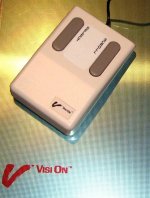RickNel
Veteran Member
Recently we are getting a lot of threads about mice and mousenalia. Does this reflect a growing sense that the mouse is heading to be exclusively a collectible vintage item?
The manufacturers seem determined to push us all to trackpads, touchscreens and every kind of human interface device except the humble mouse. Personally, I am alienated by every GUI controller ever invented, except for the robust (optical) mouse with scroll wheel, backed up by a graphics tablet for finicky screen drawing. Call me vintage fat-fingers. Multi touch gestures -> multi blunders.
On the positive side, a mouse extinction will enhance the rarity of the several boxes of serial, PS/2 and USB mice that I've accumulated, so I'm treating them with new respect and tenderness.
Rick
The manufacturers seem determined to push us all to trackpads, touchscreens and every kind of human interface device except the humble mouse. Personally, I am alienated by every GUI controller ever invented, except for the robust (optical) mouse with scroll wheel, backed up by a graphics tablet for finicky screen drawing. Call me vintage fat-fingers. Multi touch gestures -> multi blunders.
On the positive side, a mouse extinction will enhance the rarity of the several boxes of serial, PS/2 and USB mice that I've accumulated, so I'm treating them with new respect and tenderness.
Rick

